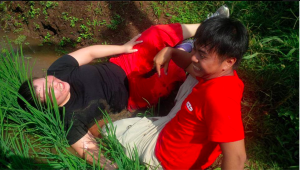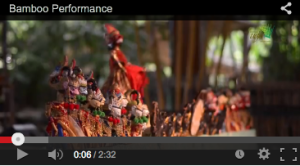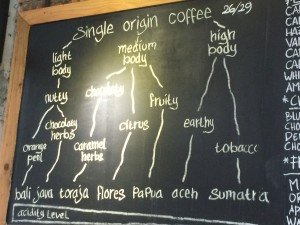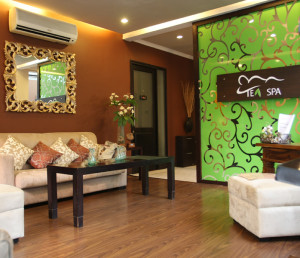A brief hiatus from coffee to share some thoughts about New Delhi. (For those of you who are wondering about the difference — New Delhi is the capital of India, and is part of a larger municipality known as Delhi.)
Like Jakarta, New Delhi is a city with much to see in its own right. While one would be hard-pressed to deem it the nicest city in India, I would argue that is is both overlooked and under-appreciated. (Again, in a classic example of not listening to “helpful” advice — I’m actually glad that I had several days to enjoy New Delhi and meet some great people!)
A typical tour of Delhi — New or Old, guided or self-explored — will bring you to the following key attractions:
The Mughal Red Fort (If on your own, get there 30 min before opening rather than baking in the afternoon sun. Prepare to shove and be shoved — and to be thoroughly irritated by the blatantly discriminatory ticket pricing for foreigners! Get the audio guide because the signage is not especially helpful.)
Qutab Minar, a UNESCO World Heritage victory minaret in the Afghan style
Humayun’s Tomb, commemorating the second Mughal Emperor of India — and even a tomb dedicated to his favorite barber! (The steep steps are totally worth it.)
Temples/Mosques/Other Houses of Worship: (I don’t mean to be glib in lumping these all together — but the fact of the matter is that each concierge/tour operator/local will recommend a slightly different combination among the three on the must-see circuit.)
Khan Market: Khan Market is frequently recommended to tourists as it is relatively tame. Boasting several nice restaurants, a fun store called Happily Unmarried (which also has a stand in the airport), and tailors / saree makers, it’s a nice enough place to visit, but not necessarily at the top of my list.
There is no shortage of information written about these places. And they are mostly magnificent. But what about some of the things that, if not entirely off the beaten track, may not immediately come to mind?
Hauz Khas
In Hauz Khas I got a vibe that I seldom felt in New Delhi (or indeed, much of India!). The vibe? Chill. And not just on the narrow strip of bars and restaurants that is the haunt of many an expat, hipster, and hipster expat — but the actual Hauz Khas Complex. This is where the remains of a fourteenth century village and lush gardens face a beautiful reservoir, the royal tank, and a deer preserve. In addition to taking in nature and history/architecture — one of the most fun things is people watching. Hauz Khas also has a number of funky antique shops, international restaurants, good coffee, and even an authentic gelato stand!
Dilli Haat
Chances are you are not going to want to purchase much (if anything) at Dilli Haat. That said, it is still well worth the trip to this kitschy but entertaining arts & crafts market, designed to replicate a traditional village market (haat). There are three branches of Dilli Haat that I am aware of — but I recommend going to the original market in INA colony because there is a fantastic food and spice market across the street.
INA Market
INA Market is not for the faint of heart, delicate of nose, or fly-phobic. And while the name Indian National Army Market may evoke stolid images of commissaries and barracks — INA Market is in fact a lively bazaar offering everything from live fish to imported pasta. And the spices! I was in heaven. Gigantic bags of bright yellow turmeric, green cardamom, black mustard seeds, vibrant red chillies overwhelm the senses. While every local has their own favorite stall, look for one that grinds and packages spices fresh and on site.
Gourmet Desire
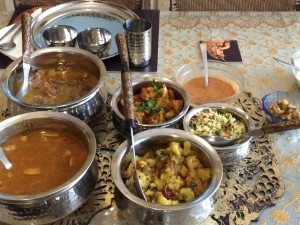
The feast that we helped to prepare at Gourmet Desire — a combination of Northern and Southern Indian cuisine.
If sightseeing in the baking, and I mean BAKING sun isn’t your thing — New Delhi offers an array of activities to delight even the weariest, heatstroke-prone business traveler. In my case, this turned out to be a cooking class. While many five star hotels offer new initiates a variety of options to try their hand at preparing Indian cuisine, my friend P and I decided to try Gourmet Desire, a program run out of the home of Jyoti Agarwal. Beginning her career as a baker / chocolatier, Jyoti later realized that the many wonderful regional cuisines of India are the perfect way to experience the richness and diversity that is India — all in one place.
Coming up!
New Delhi is also a fantastic launching pad to a number of places with posts forthcoming, including:
- The Eye-Opening — Amritsar and the India’s Wagah border with Pakistan
- The Peaceful (aka Royalty for a Weekend) — Udaipur
- The Obvious — Agra and the Taj Mahal
And many, many more.







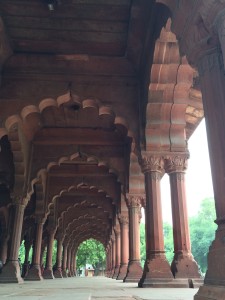
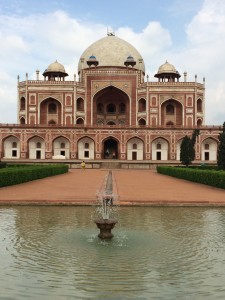
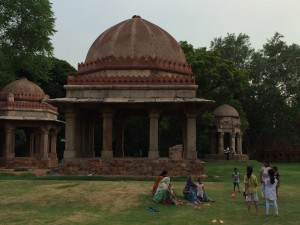
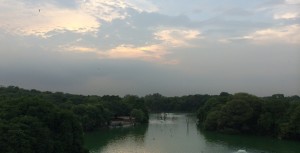

![FullSizeRender[1]](http://www.weekendcrossroad.com/wp-content/uploads/2015/01/FullSizeRender1-225x300.jpg)

